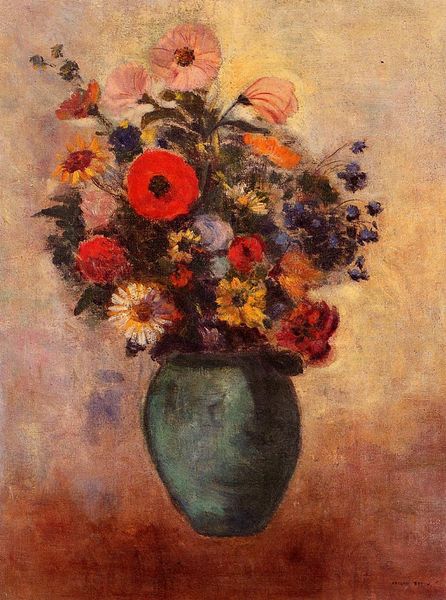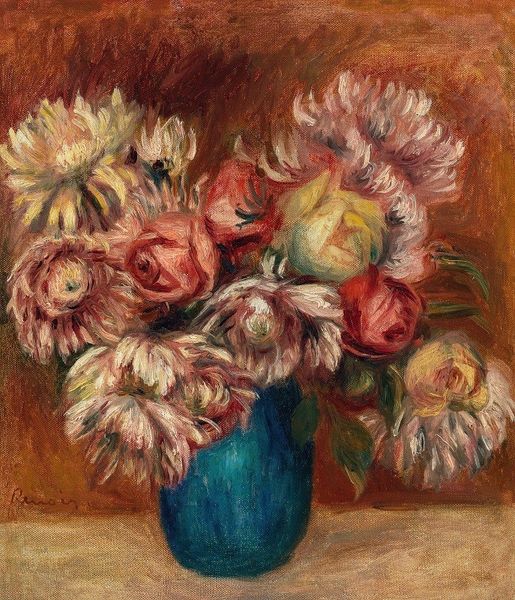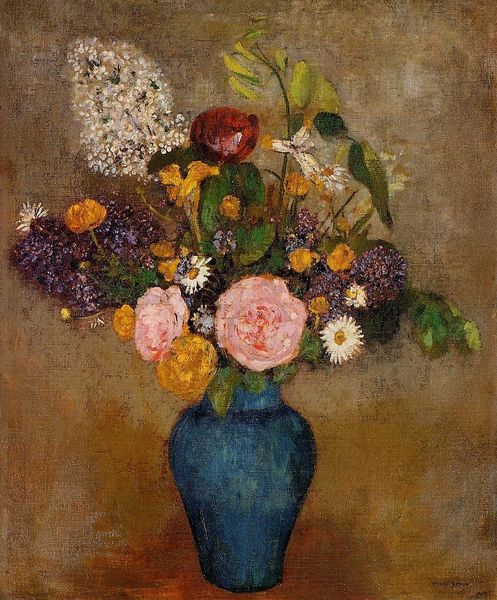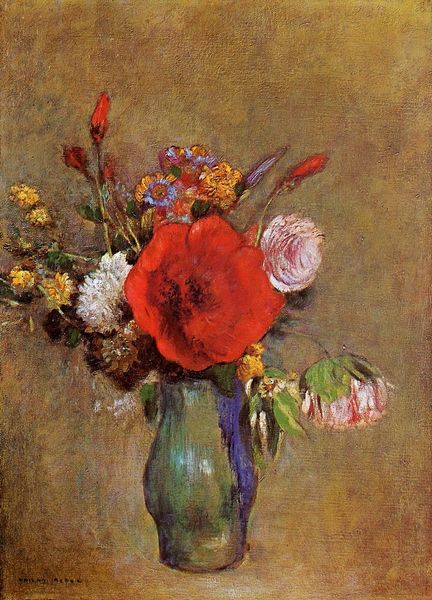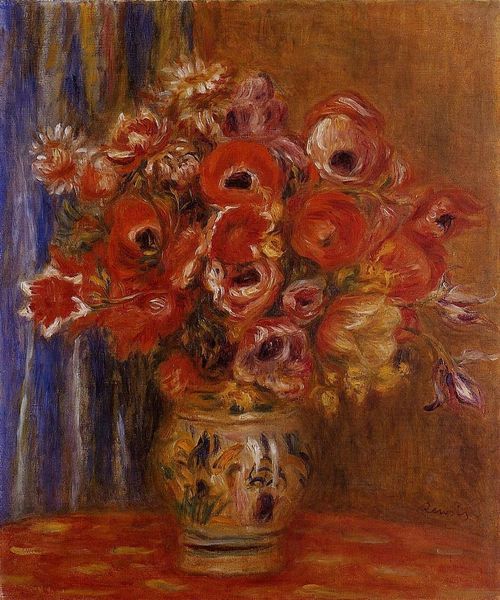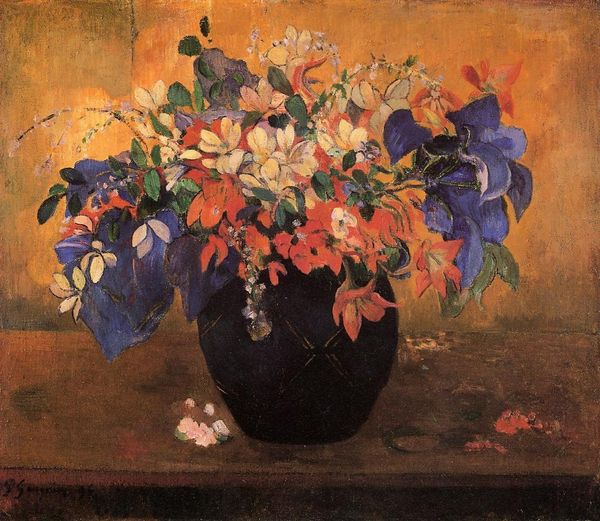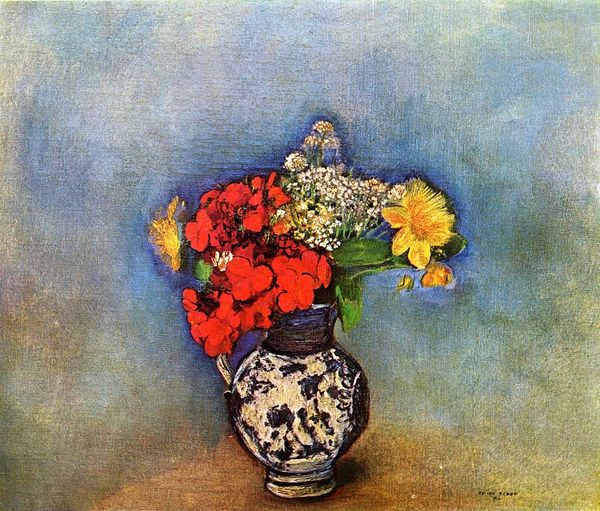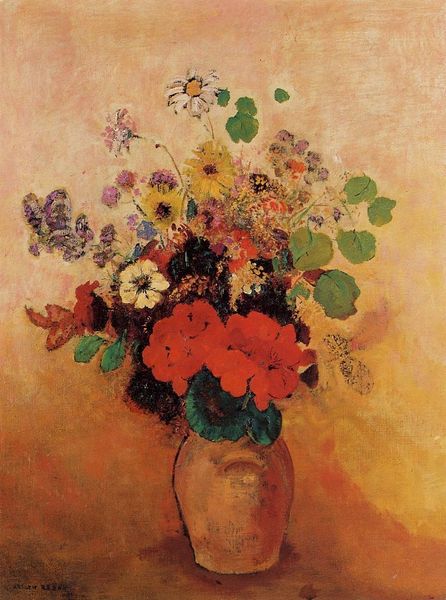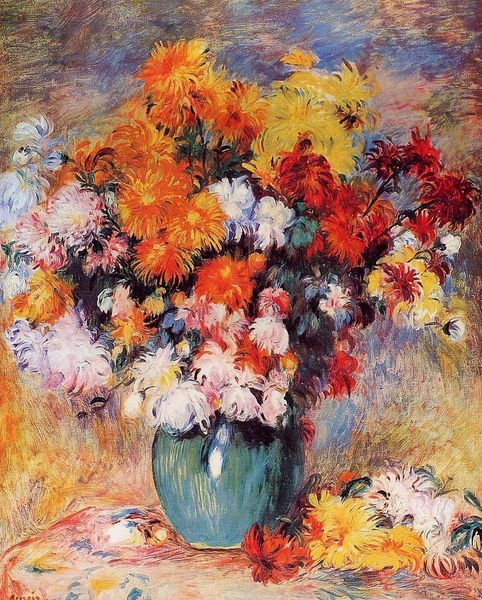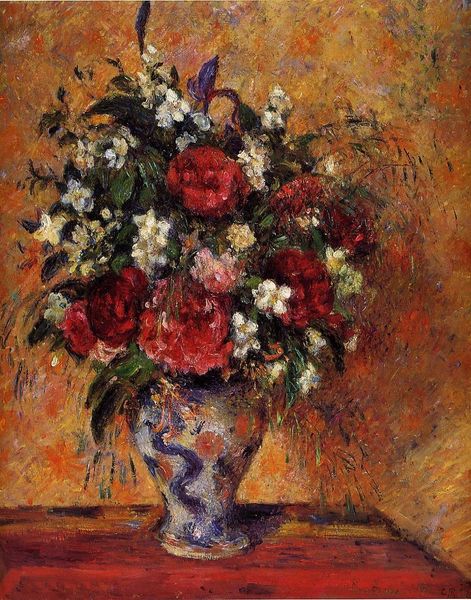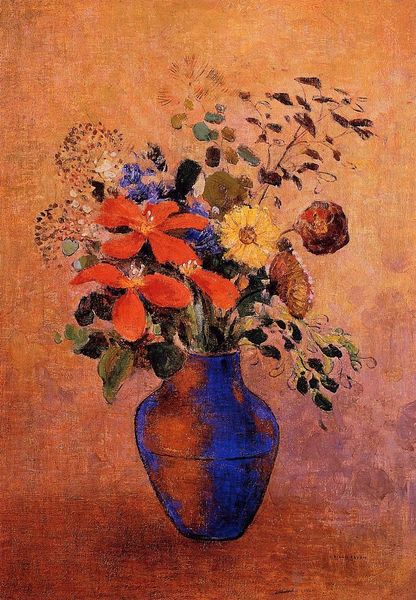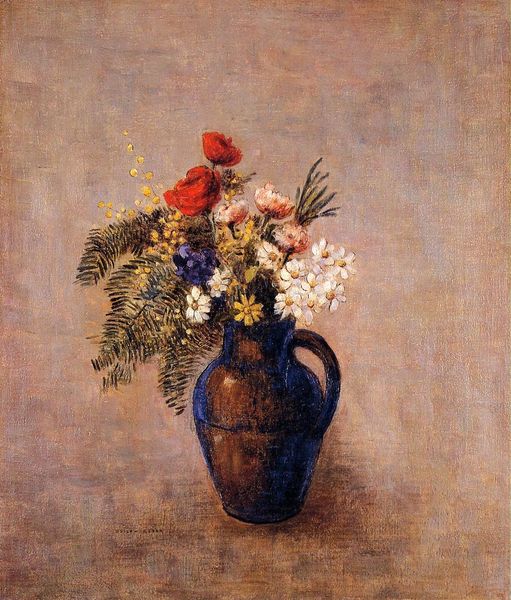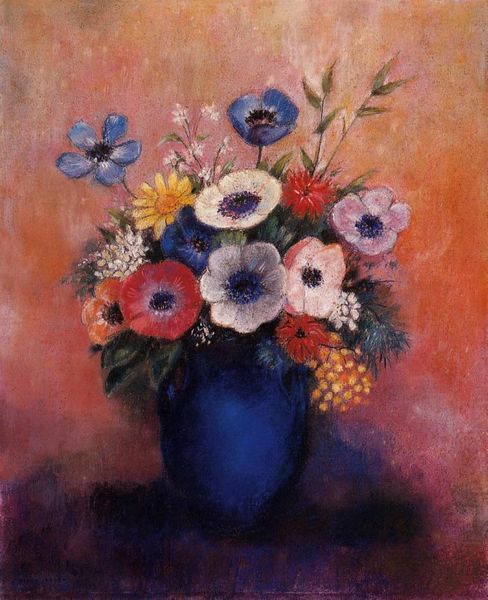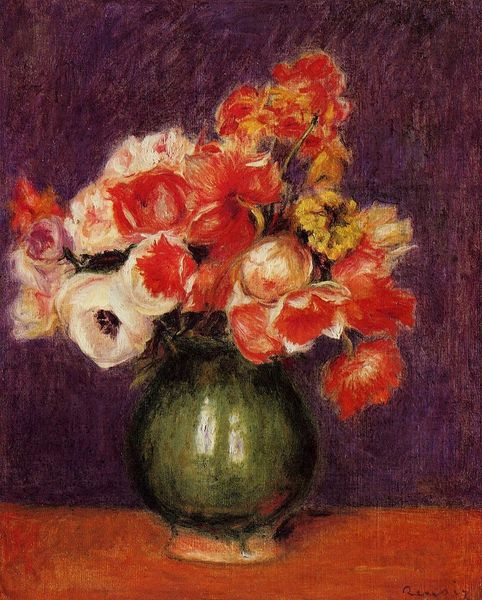
Copyright: Public domain
Editor: Here we have Renoir's "Flowers in a Vase" from 1878, an oil painting overflowing with blossoms in a decorative blue vase. I'm struck by the texture – it's so thick and luscious! What stands out to you? Curator: I am drawn to Renoir’s material treatment of the flower as commodity. Floral paintings were extremely popular at the time, serving as both decoration and status symbol for the bourgeoisie. Notice the conspicuous consumption embodied not only in the arrangement’s abundance, but in the vase itself. It implies trade and access, doesn't it? Editor: Definitely! It's not just about the flowers, but the entire presentation. Does the way Renoir applied the paint tell us something more about how these objects were perceived? Curator: Absolutely. Consider the brushstrokes, the almost frantic energy in rendering petals. Is this a celebration of nature's beauty or a reflection on its commodification and ephemerality? It is painted so lushly – almost as though to make us believe in this abundance, to hide the artificiality of it. Does it successfully manage it? Editor: That's a great point. Maybe the focus on material wealth disguised anxieties about a rapidly changing society and anxieties connected to industrialization. Curator: Exactly. Also, do you note that while flowers are temporary commodities, oil paintings were a more permanent one? Does that contrast mean something, do you think? Editor: That gives me a lot to think about! Thanks, I didn't look at this painting from the side of commodification. Curator: The relationship between art, industry, and consumerism is often more deeply intertwined that what is on the surface. The work pushes us to question not just the beauty, but its construction.
Comments
No comments
Be the first to comment and join the conversation on the ultimate creative platform.
